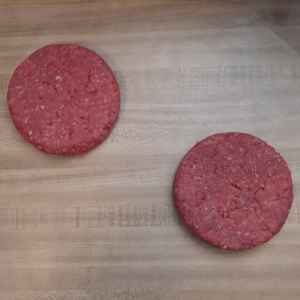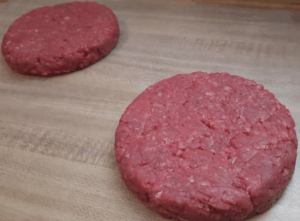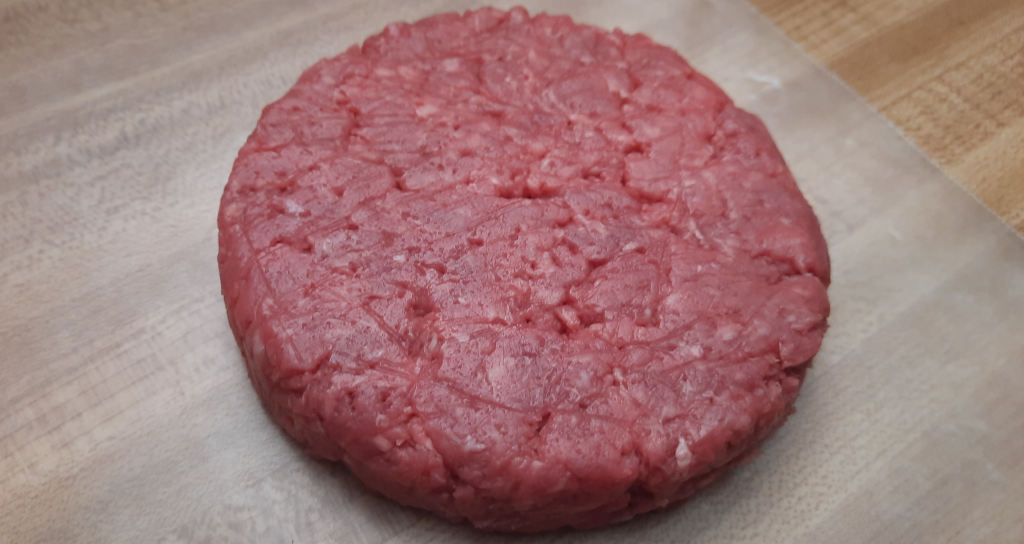In the culinary world, few foods have achieved the cultural prominence of the hamburger. Yet, beyond discussions of meat quality, seasoning, or toppings lies an often-overlooked factor that dramatically influences the final product: the shape of the patty itself. The geometry of your burger isn’t just an aesthetic choice—it’s a critical variable that affects everything from cooking dynamics to flavor development and eating experience.
The Physics of Patty Geometry
At its core, burger cooking is a heat transfer problem. When we place a patty on a hot surface, we’re initiating a complex exchange of thermal energy that transforms raw meat into a savory meal. The shape of the patty fundamentally alters this process in several ways.
Surface Area to Volume Ratio: The Hidden Game-Changer
The most significant impact of shape comes from the ratio of surface area to volume. A thin, wide patty exposes more of its mass to direct heat than a thick, compact one. This increased exposure means faster cooking times and more extensive Maillard reaction—the chemical process responsible for that delicious browned crust and enhanced flavor compounds.
However, this trade-off comes at a cost. The larger surface area also means more opportunity for moisture loss. As heat penetrates the meat, water molecules escape through the exposed surfaces. In thin patties, the distance water needs to travel to exit is shorter, potentially resulting in a drier finished product if not managed properly.
Heat Penetration and Temperature Gradients
The path heat takes through your patty isn’t uniform—it travels from the outside in. In thicker patties, this creates pronounced temperature gradients, where the exterior might reach well-done temperatures while the center remains medium-rare. While some diners prefer this variation, it presents challenges for food safety and consistency.
Thinner patties minimize these gradients, allowing for more uniform cooking throughout. This is why fast-food restaurants, prioritizing consistency and quick cooking times, typically opt for thinner patties that can be cooked thoroughly in a single flip.
Cooking Dynamics: How Shape Dictates Technique
Different shapes demand different approaches to achieve optimal results:
The Classical Thick Patty
 The traditional thick, disc-shaped burger (think steakhouse or pub-style) requires careful attention to temperature control. Too hot a cooking surface, and you’ll burn the exterior before the center reaches safe temperatures. Too cool, and you’ll lose the opportunity for crucial flavor development through caramelization.
The traditional thick, disc-shaped burger (think steakhouse or pub-style) requires careful attention to temperature control. Too hot a cooking surface, and you’ll burn the exterior before the center reaches safe temperatures. Too cool, and you’ll lose the opportunity for crucial flavor development through caramelization.
Expert chefs often use the “dimple technique” with these patties—pressing a shallow indentation in the center before cooking. This counteracts the tendency of thick patties to bulge in the middle during cooking, which can lead to uneven cooking and an awkward eating experience.
The Revolutionary Smash Burger
The smash burger technique has gained tremendous popularity precisely because it leverages the advantages of shape. By starting with a loosely formed ball and smashing it thin on a scorching hot surface, you maximize the surface area exposed to heat. This creates an extensive crust formation while the quick cooking time prevents excessive moisture loss.
The irregular edges of a smashed patty create textural contrast—crispy, lacy edges surrounding a juicy center. These edges also increase the total surface area exposed to the Maillard reaction, amplifying flavor development beyond what a neat, uniform patty could achieve.
The Sensory Experience: Texture, Mouthfeel, and Flavor
Beyond the cooking process, shape directly influences how we experience the burger when eating:
Bite Dynamics and Mouthfeel
A thick, compact patty provides substantial resistance when bitten, creating what food scientists call “mechanical contrast”—the satisfying feeling of teeth sinking through different layers of texture. This substantial mouth presence can feel more substantial and “premium” to some diners.
Conversely, thin patties offer less resistance but provide more immediate flavor release. The higher ratio of seared surface area to interior means more flavor compounds hit your taste receptors at once, creating an intense but different kind of satisfaction.
Topping Integration and Structural Integrity
The shape of your patty directly affects how it interfaces with toppings and condiments. Wide, flat patties create more surface area for toppings to adhere to, potentially offering more consistent flavor distribution throughout each bite. However, they may also require larger buns, which can throw off the crucial bread-to-meat ratio.
Thicker patties allow for more sophisticated internal seasoning and fillings (like cheese-stuffed patties), but present challenges for topping distribution. The “dome” shape that naturally forms during cooking can cause toppings to slide off unless carefully managed.
Beyond the Circle: Exploring Alternative Geometries
While the disc shape dominates burger culture, some innovative chefs are exploring alternatives:
Square patties offer edge-to-edge bun coverage, eliminating the “where’s the beef?” phenomenon of meat-free bites at the corners of the sandwich. They also provide more consistent thickness throughout, potentially solving some cooking uniformity issues.
Rectangular patties (think Wendy’s) similarly address bun coverage while offering the additional benefit of intentional overhang—those delicious corners that extend beyond the bun, offering extra crispy texture.
More experimental shapes like ovals or triangles remain novelties but may yet reveal unforeseen advantages as culinary exploration continues.
Finding Your Perfect Patty
 The ideal burger shape ultimately depends on your priorities:
The ideal burger shape ultimately depends on your priorities:
- For maximum crust development and flavor intensity: Choose thin, wide patties with irregular edges
- For juiciness and temperature gradients: Opt for thicker, compact shapes
- For cooking consistency and convenience: Consider uniform thickness with moderate surface area
The beauty of burger crafting lies in this versatility—the ability to adjust your approach based on equipment, ingredients, and personal preference. By understanding how shape influences the cooking process and eating experience, you can make intentional choices that elevate your burger from good to extraordinary.
In the end, the shape of your burger isn’t just a matter of appearance or tradition—it’s a fundamental variable in the complex equation of burger perfection.



